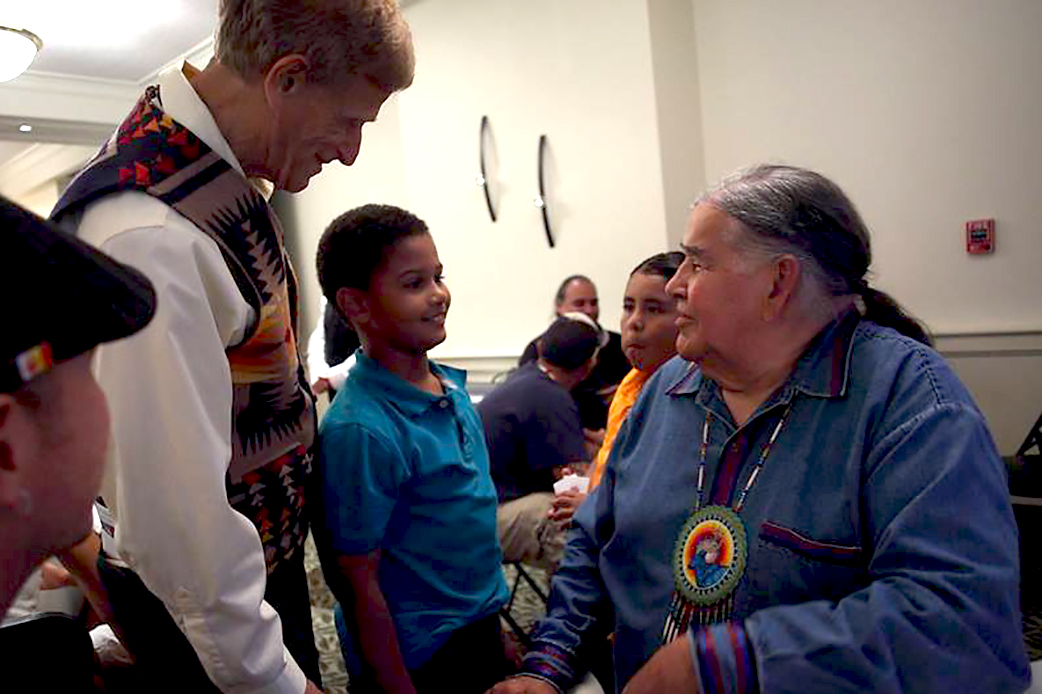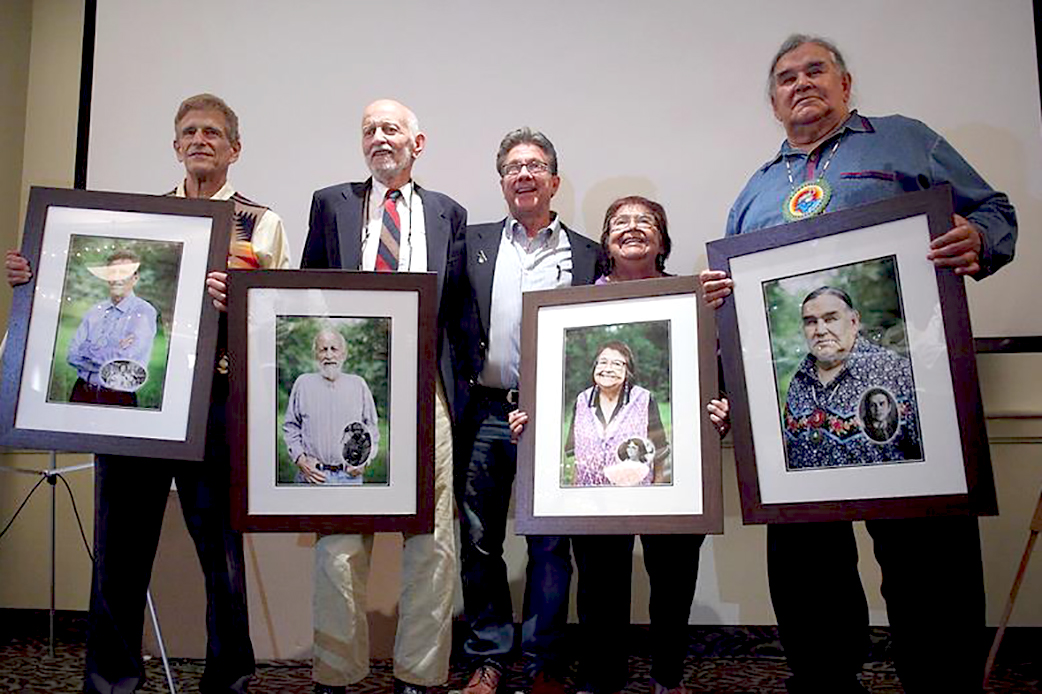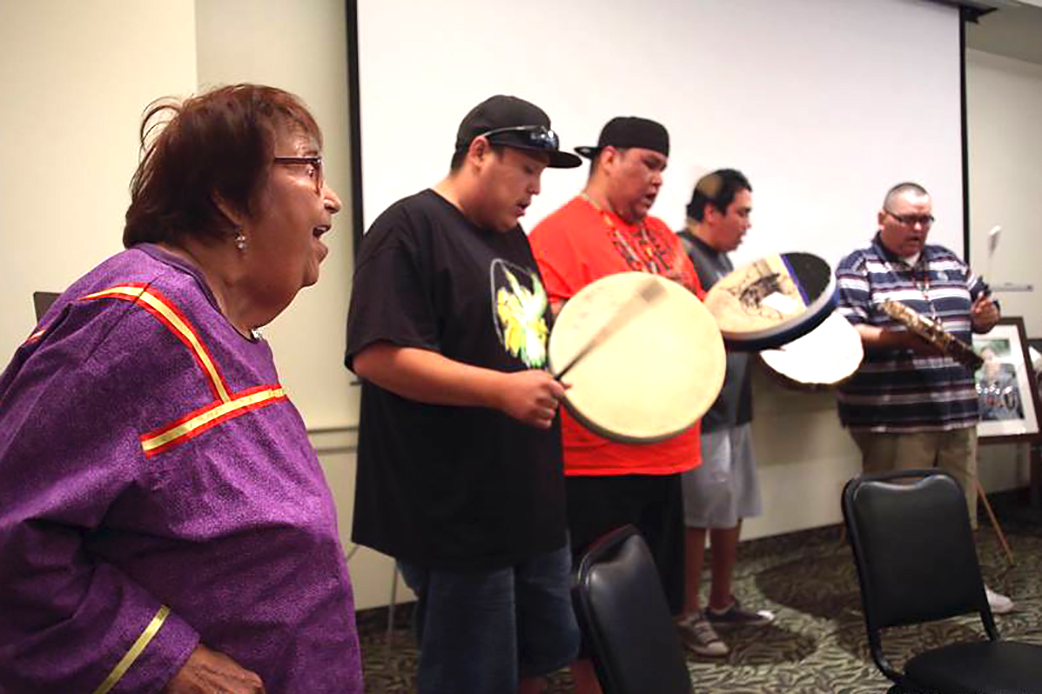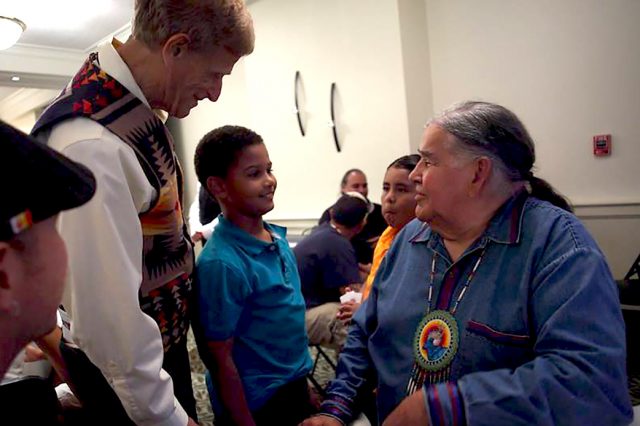 Clyde Bellecourt was naked, locked in
Clyde Bellecourt was naked, locked in
a dark, solitary cell in the bowels of Stillwater State Prison.
Almost two weeks had passed since the 32 year-old Anishinaabe inmate
had been forced into that cold concrete dungeon; he awoke
contemplating suicide.
Bellecourt’s path to Stillwater had
begun long before, while still in the fifth grade. He ran away from
school on the White Earth Reservation, where he was often beaten for
acting out. Even as a child, Bellecourt rebelled against a system
that denied the history and culture of his people. He was judged
incorrigible by local authorities and sent to the Red Wing State
Training School, a juvenile correctional facility.
Years later, lying raw against his
stone bunk at Stillwater, Bellecourt remembered the cries of boys
pleading for help as they were sexually molested by the Red Wing
reformatory’s priest.
As he considered taking his own life,
Bellecourt heard someone whistling “You Are My Sunshine” outside
the cell door.
He wondered: Who the hell whistles a
song like that inside a prison?
He heard someone call out, "Is
there a Clyde Bellecourt here?"
It was the voice of Eddie
Benton-Banai, an Anishinaabe prisoner from Round Lake, Wisconsin.
Benton-Benai asked Bellecourt for help organizing Native prisoners
for an Indian folklore group.
Their eyes met through the peephole of
the cell door seeding a partnership that would eventually blossom
into the American Indian Movement, perhaps the most influential
indigenous organization of the 20th century. Bellecourt and
Benton-Banai succeeded in convincing a majority of the prison’s
nearly 200 Native prisoners to join their group.
Speaking at the celebration of the
46th anniversary of the American Indian Movement on July 28,
Bellecourt said those prisoners coming together to learn about their
traditions constituted “the first Native American Studies course in
America.”
Upon release later that year,
Bellecourt continued to organize Native people on the streets of
Minneapolis, where police brutality, the education system, health
disparities, alcoholism and unemployment were destroying lives.
AIM attracted a strong grassroots
following, particularly among displaced urban Indians and by 1972 had
drawn worldwide attention to the abysmal condition of Native America.
AIM supported the occupation of Alcatraz island in 1969; led the
takeover of the BIA building in Washington D.C. in 1973 and battled
the federal government at Wounded Knee for 71 days later that year.
These actions led to the development of social justice services for
Native people, Indian Gaming, the enforcement of treaty rights, and
the revitalization of language and spirituality.

Those honored at Black Bear Crossings
in St. Paul were Bellecourt and three other pillars of the American
Indian Movement: attorney Larry Leventhal, photographer Dick Bancroft
and AIM Grand Governing Council board member/activist Pat Bellanger.
Some 300 community members attended the event.
The four honorees took turns at the
podium, reflecting on AIM’s record of achievement, spanning six
decades. They were joined by, among others, singer Larry Long,
Bellanger’s daughter Lisa Bellanger and Black Bear Crossings owner
David Glass.
“It’s important that we recognize
the work these four people have done for the American Indian
community,” Glass said. “Clyde Bellecourt and his cohorts have
been able to impact their community more than any elected leaders
I’ve known.”
AIM was instrumental in the creation
of many local and national non-profit organizations, including the
Legal Rights Center, Indian Health Board of Minneapolis, Heart of the
Earth Survival School, Red School House, International Indian Treaty
Council, MIGIZI Communications, American Indian Opportunity
Industrialization Center (AIOIC) and the National Coalition on Racism
in Sports and Media.
“They were a small group of people
who stood up to the federal government and changed the course of
history. AIM made an invisible population visible,” Alan Yelsey
said, a member of the National Coalition on Racism in Sports and
Media. The organization recently scored a major victory when
Washington’s NFL team lost their patent rights to the Redskins
nickname. Yelsey attended the anniversary celebration to toast the
past, but said AIM must continue to look forward. “I’m here to help
AIM finish the job of insuring equality for all Native people.”
Lisa Bellanger, whose mother earned
the name ‘Grandma AIM’ after years of dedicated service, recalled the
price her family paid for their association with the Movement, which
the Nixon administration labeled a terrorist organization. “Police
cars drove by with huge spotlights shining into our house. Our phones
were constantly tapped. Our house was ransacked every once in a
while.”
Bellanger shared a childhood memory of
watching her mother leave home for Wounded Knee. “She went all
over Minneapolis accumulating medical supplies. When she left I
wanted to go with her, but my grandma said I was too little. My mom
crawled through the back country with those supplies to get into
Wounded Knee. Once inside she fixed and cleaned a lot of weapons. She
had spent time in the woods with her uncles and brothers and knew all
about caring for firearms. She was the little Indian chick from the
city who showed the warriors how to do it.”
 Pat Bellanger explained her passion
Pat Bellanger explained her passion
for the AIM struggle. “Before AIM,” she said, “there was no
news coming out of Indian Country. The government felt they could do
whatever they wanted to Native people. The feds announced they were
going to terminate the tribes, and all of us Indians were supposed to
accept it and live like happy Americans. I didn’t like that idea.”
AIM Grand Governing Council Chairman
Keith Lussier encouraged the many young people in attendance to seek
out the history of the American Indian Movement and keep it alive.
"Listen closely to the stories of the people being honored here
tonight. Learn what they’ve done for us. They’ve led us into battle,
brought us home and written our history. We are who we are because of
them.”
Now 78 years old, Bellecourt maintains
a commanding presence at the microphone and in the boardroom – a
member, or so it seems, of every Native nonprofit board in town. In
his remarks to the gathering, he addressed the suggestion that he
might be slowing down. “They said I was incorrigible then. Well,
I’m incorrigible now. And I’m going to continue to be incorrigible.”







